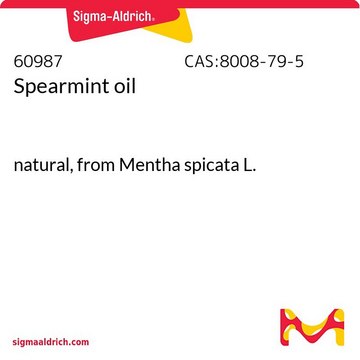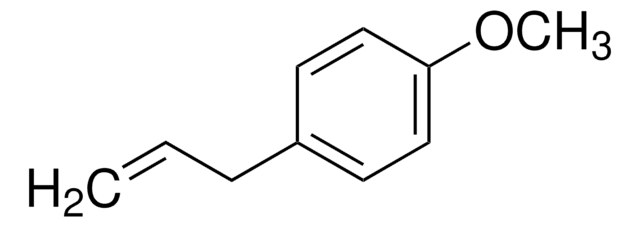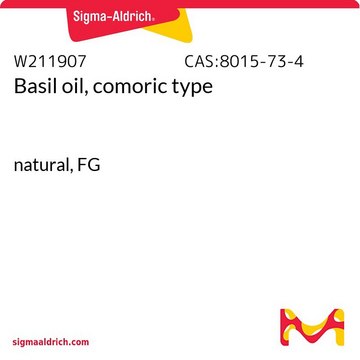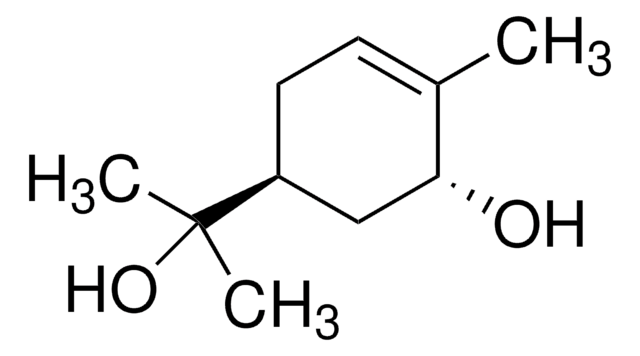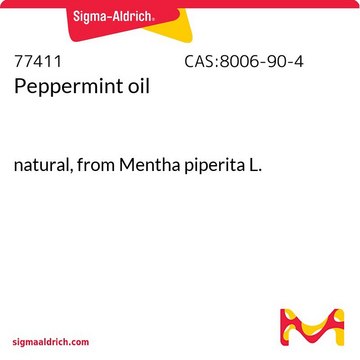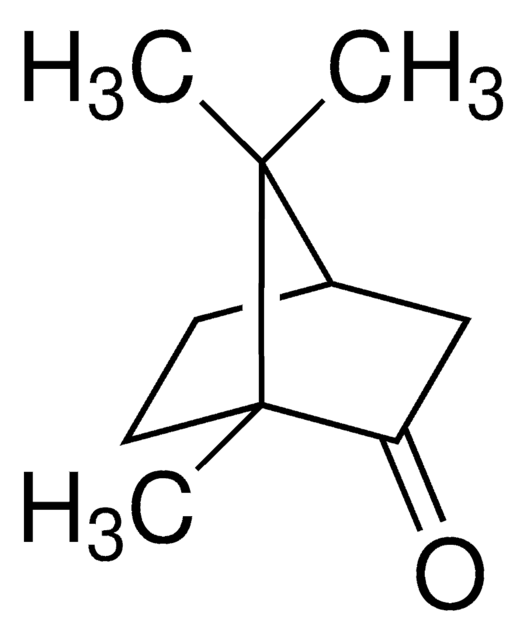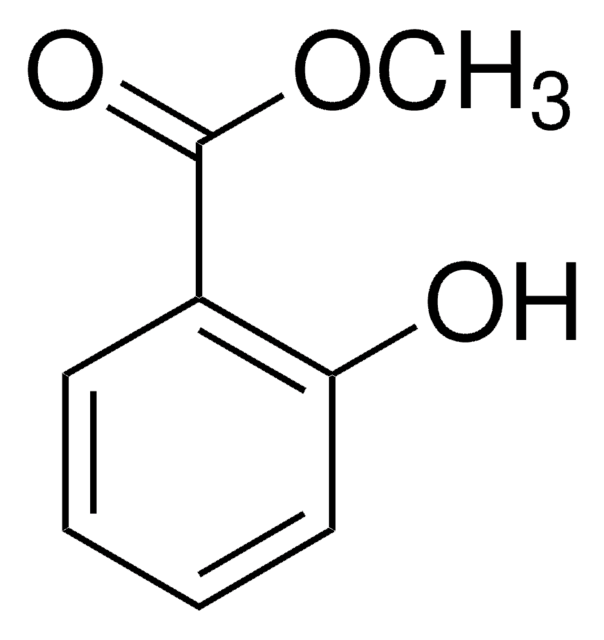All Photos(1)
About This Item
Organoleptic:
green; spicy
grade:
FG
natural
natural
food allergen:
no known allergens
Recommended Products
grade
FG
natural
Quality Level
reg. compliance
EU Regulation 1334/2008 & 178/2002
FDA 21 CFR 117
FDA 21 CFR 182.20
composition
Methyl chavicol, ≥80%
refractive index
n20/D 1.515
density
0.961 g/mL at 25 °C
application(s)
flavors and fragrances
Documentation
see Safety & Documentation for available documents
food allergen
no known allergens
Organoleptic
green; spicy
Looking for similar products? Visit Product Comparison Guide
Signal Word
Warning
Hazard Statements
Precautionary Statements
Hazard Classifications
Acute Tox. 4 Oral - Eye Irrit. 2 - Skin Irrit. 2 - STOT SE 3
Target Organs
Respiratory system
Storage Class Code
10 - Combustible liquids
WGK
WGK 3
Flash Point(F)
179.6 °F
Flash Point(C)
82 °C
Regulatory Information
新产品
Choose from one of the most recent versions:
Already Own This Product?
Find documentation for the products that you have recently purchased in the Document Library.
Vijayalakshmi Ghosh et al.
Ultrasonics sonochemistry, 20(1), 338-344 (2012-09-08)
Basil oil (Ocimum basilicum) nanoemulsion was formulated using non-ionic surfactant Tween80 and water by ultrasonic emulsification method. Process of nanoemulsion development was optimized for parameters such as surfactant concentration and emulsification time to achieve minimum droplet diameter with high physical
Tanja Berić et al.
Food and chemical toxicology : an international journal published for the British Industrial Biological Research Association, 46(2), 724-732 (2007-11-06)
Mutagenic and antimutagenic properties of essential oil (EO) of basil and its major constituent Linalool, reported to possess antioxidative properties, were examined in microbial tests. In Salmonella/microsome and Escherichia. coli WP2 reversion assays both derivatives (0.25-2.0 microl/plate) showed no mutagenic
L Müller et al.
Mutation research, 325(4), 129-136 (1994-12-01)
Estragole, trans-anethole and basil oil were tested for their ability to induce DNA repair in rat hepatocytes in vitro and in rat liver in an ex vivo test. There was a marked induction of UDS by estragole and basil oil
A Singh et al.
Food and chemical toxicology : an international journal published for the British Industrial Biological Research Association, 37(6), 663-670 (1999-09-09)
The present study was designed to elucidate the mechanistic inhibitory efficacy of clocimum (an eugenol rich variety of Ocimum gratissimum; Labiatae) oil on murine skin papillomagensis. Topical application of clocimum oil (50 microl/animal/day) during peri-initiation stage (1 week before and
Saima Amin et al.
Pharmaceutical development and technology, 13(6), 533-539 (2008-08-23)
The effect of penetration enhancers like tulsi (basil) oil, eucalyptus oil, clove oil, black cumin oil, oleic acid and Tween 80 on the percutaneous absorption of model lipophilic drug-carvedilol was investigated using excised rat abdominal skin. Transdermal flux, permeability coefficient
Our team of scientists has experience in all areas of research including Life Science, Material Science, Chemical Synthesis, Chromatography, Analytical and many others.
Contact Technical Service
